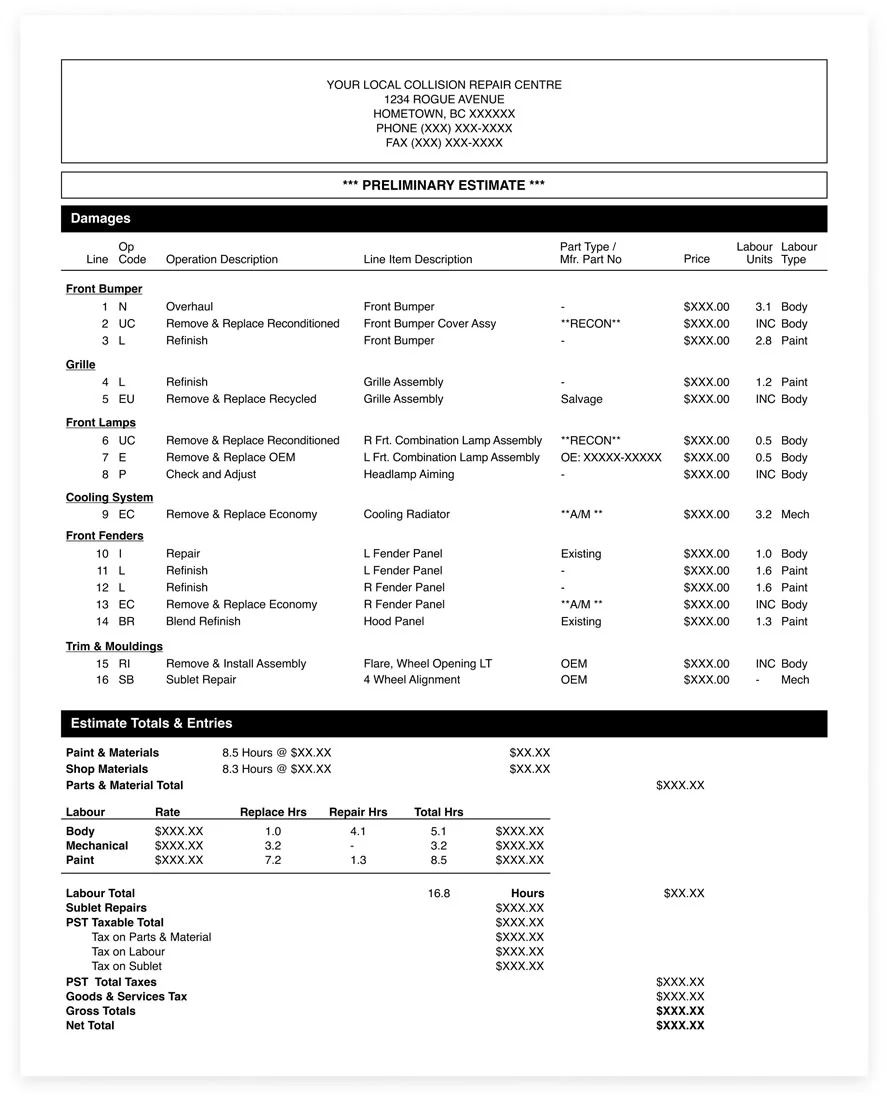How to read a collision repair estimate
We want to help you ensure your Nissan stays a Nissan, which is why we put together this collection of terms and abbreviations frequently used on a collision estimate. Knowing and understanding these ahead of time will make it easier for you to verify the quality and condition of the parts being used to repair your Nissan.

1 Operation
This column lists the type of repair operation to each damaged part of your vehicle. Some common operations are:
Overhaul (O/H): Remove an assembly, disassemble, clean and visually inspect it, replace needed parts, reassemble and reinstall on the vehicle making any necessary adjustments.
Overlap: If adjoining parts are being replaced, there’s an overlap in that both individual operations include common welded surfaces or parts attached to both panels. Therefore, a deduction must be made from the total of the individual operations to compensate for the two or more repeated operations. Similarly, if the part has already been removed, it makes access to other parts easier.
Repair: Retain the original part or assembly and repair for time specified under the Labor Units column.
Refinish: Paint a part or assembly to match the original color.
Blend refinish: The process of mixing toners to match the existing paint finish, then blending or overlapping the color into the adjacent panel to avoid color match problems.
Remove/install: Remove a part or assembly, set it aside and reinstall it later.
Remove/replace: Remove a part or assembly and replace with a different one.
Sublet: Repair operation that may be completed by someone other than the body shop, but on behalf of the body shop.
Add labour OP: Additional repair operations required for the repair of your vehicle such as applying clear coat as required by certain year, make and models.
2 Description
This column lists each part of your vehicle that will be addressed during the repair.
3 Part Type/Part No.
Not all replacement parts are created equally. Understanding the differences between the types of replacement parts will help inform your decisions in exercising your right to choose.
4 Labour Units/Hours
This column lists the established standard amount of time required to complete the listed operation in hours.